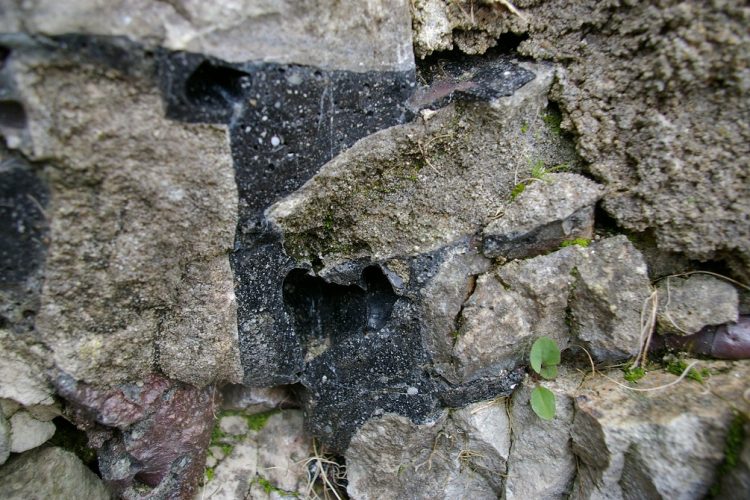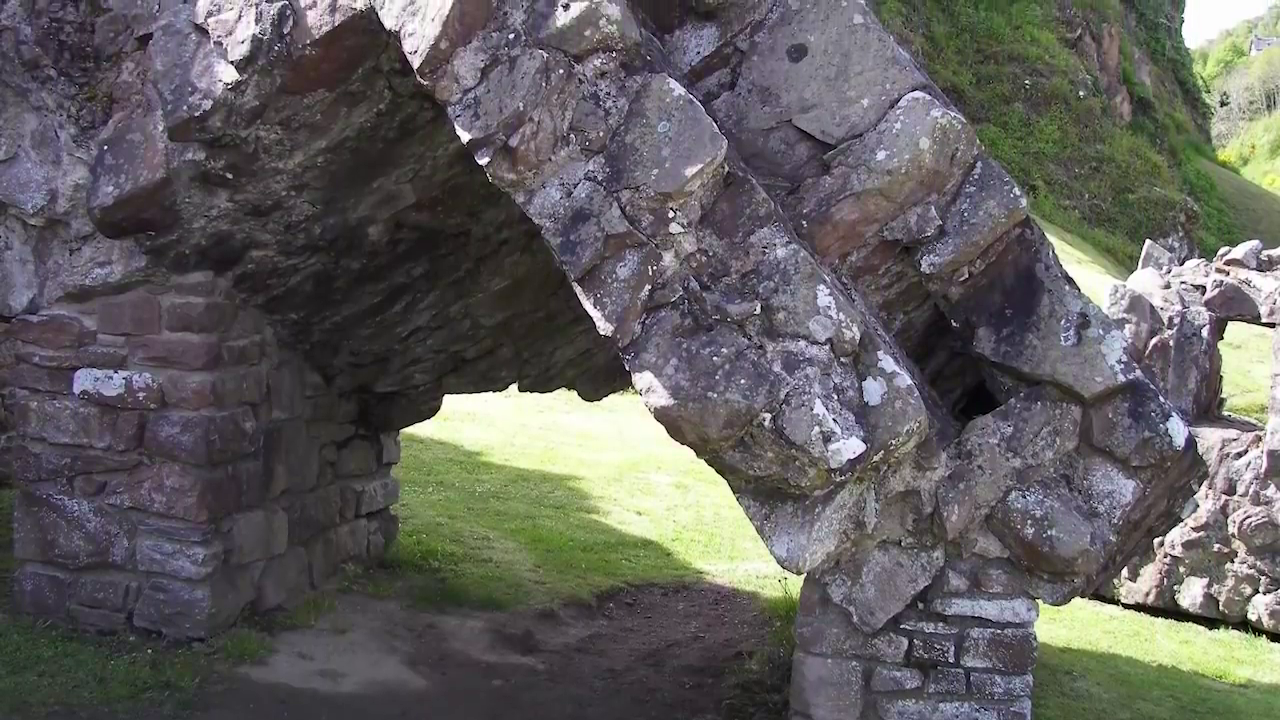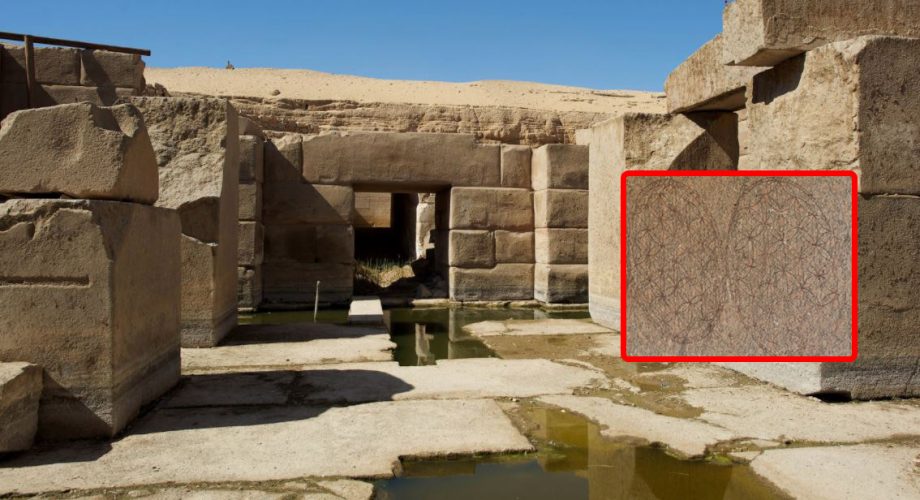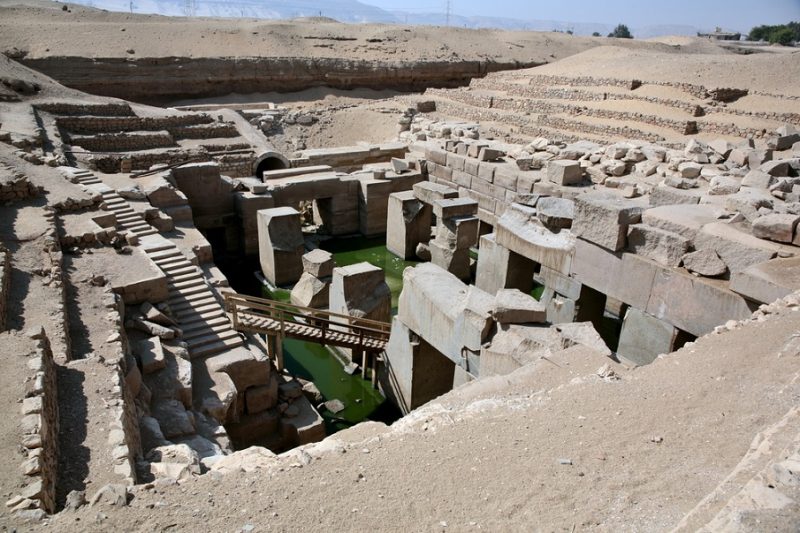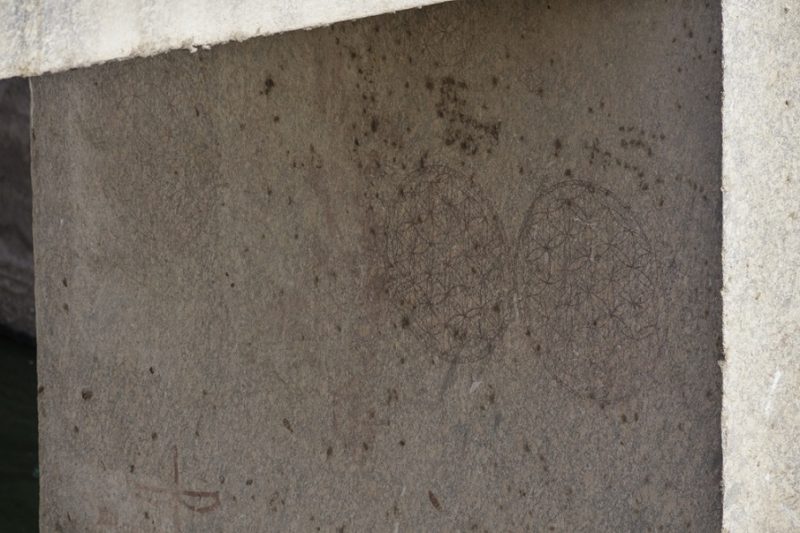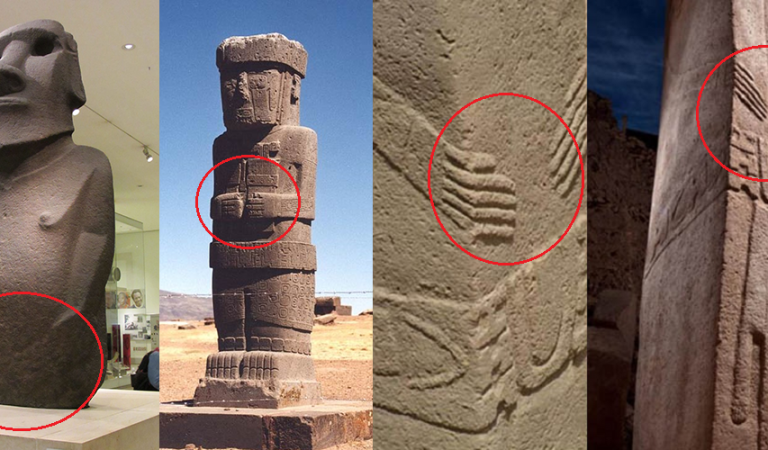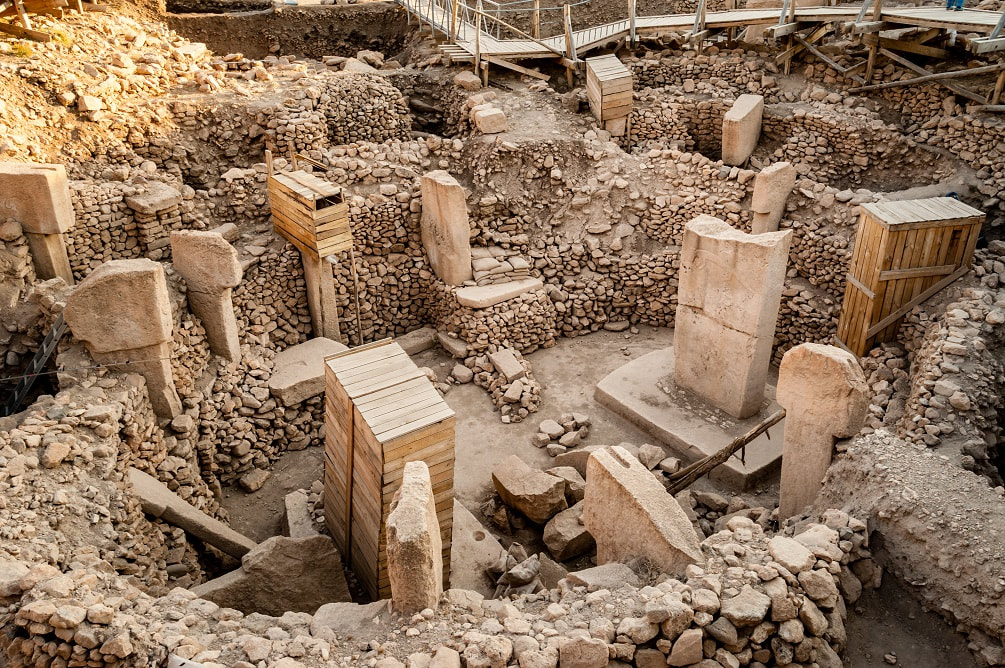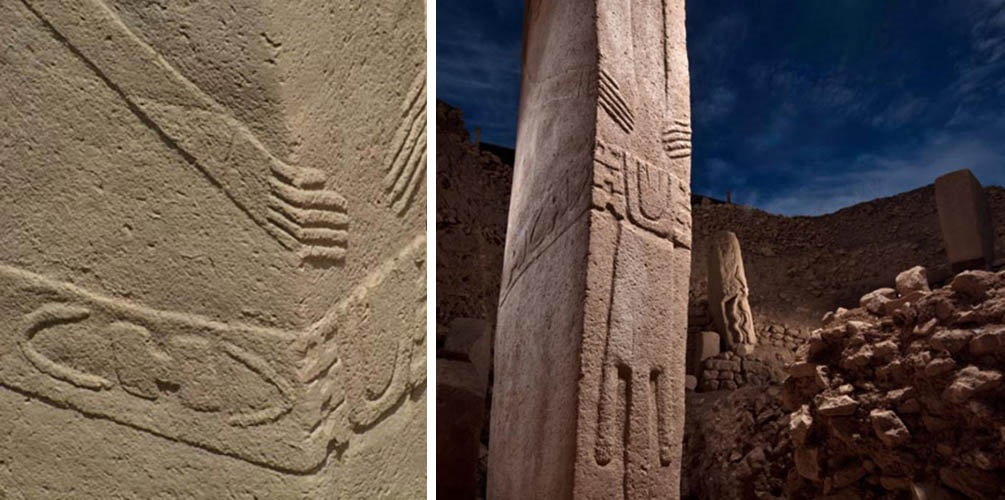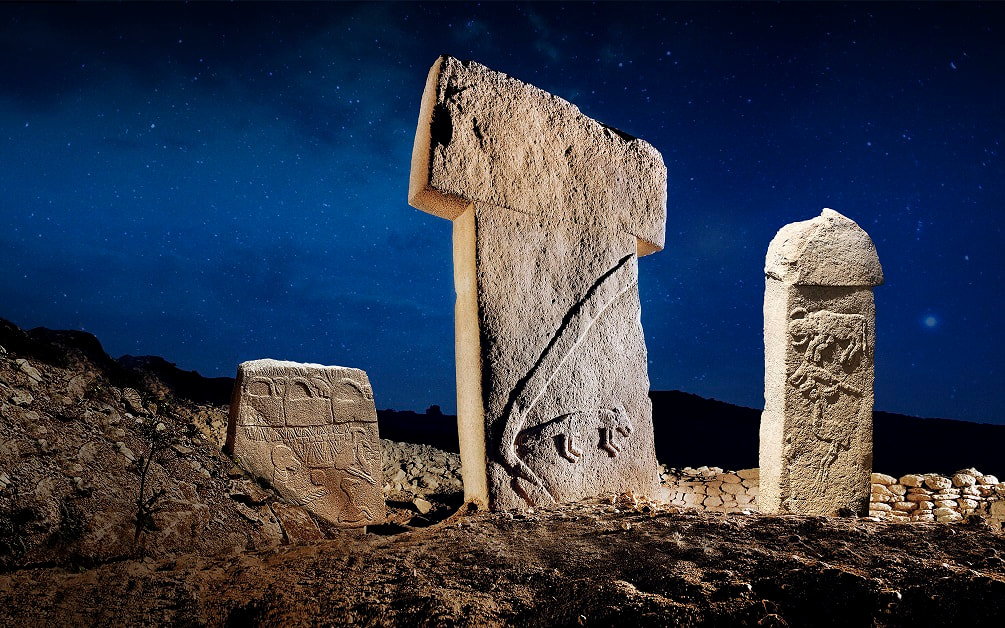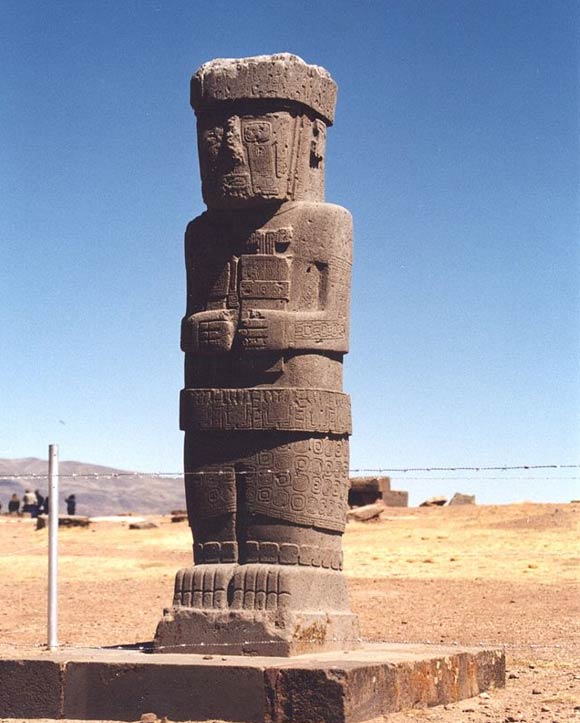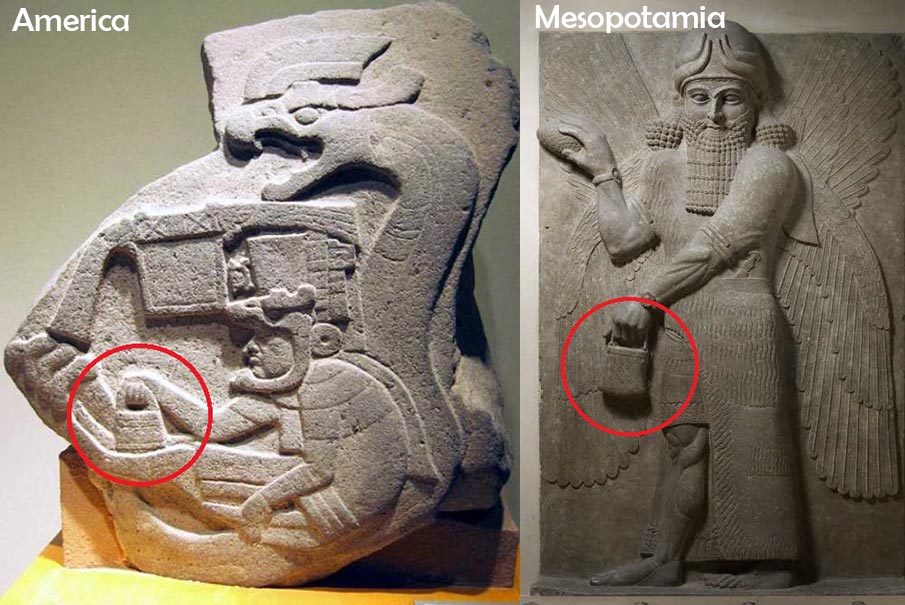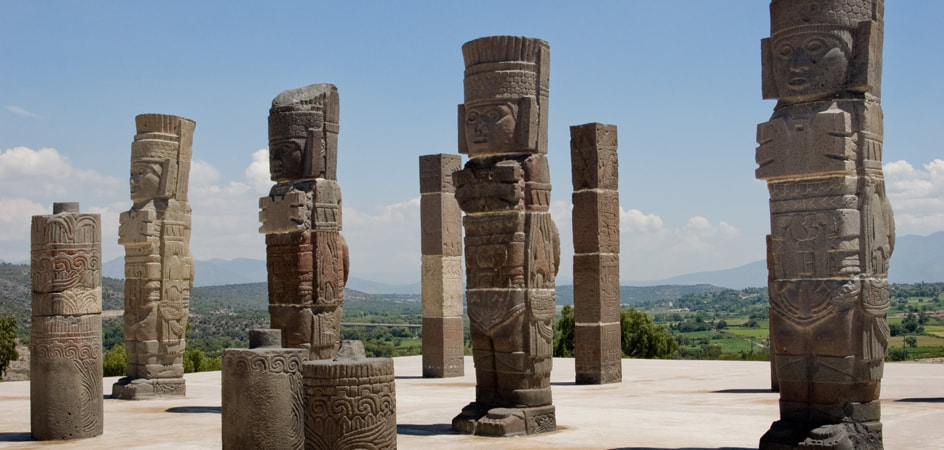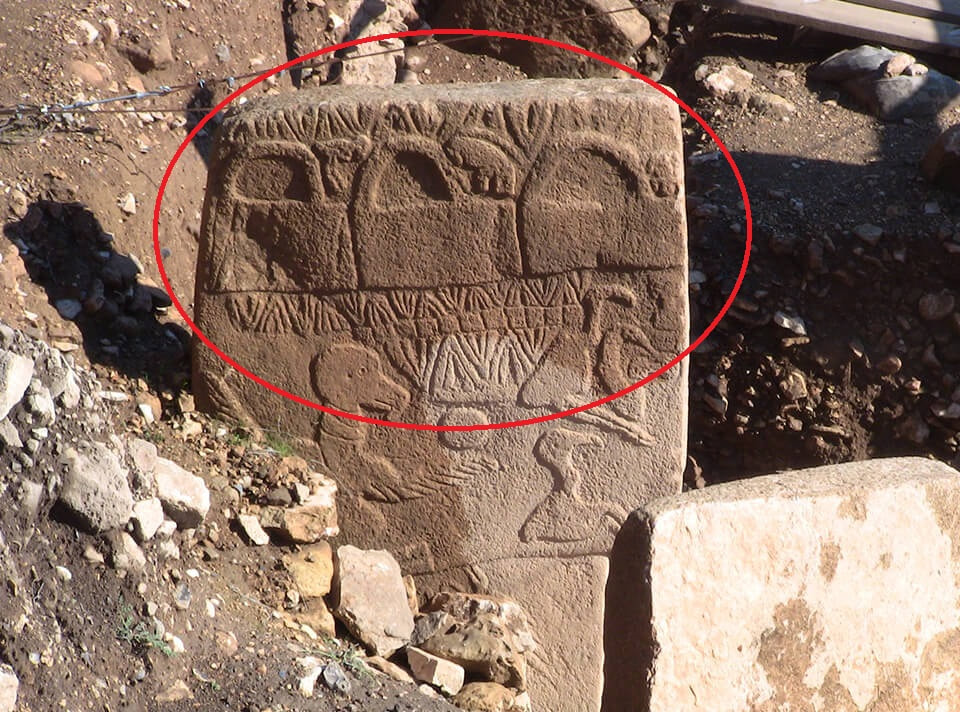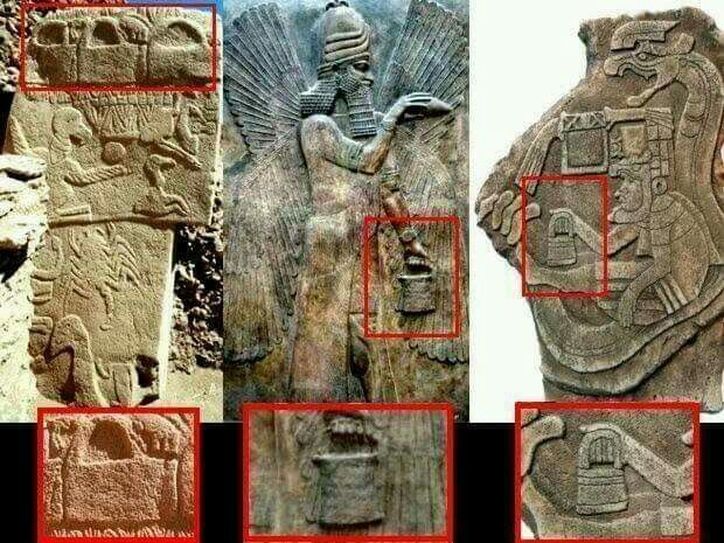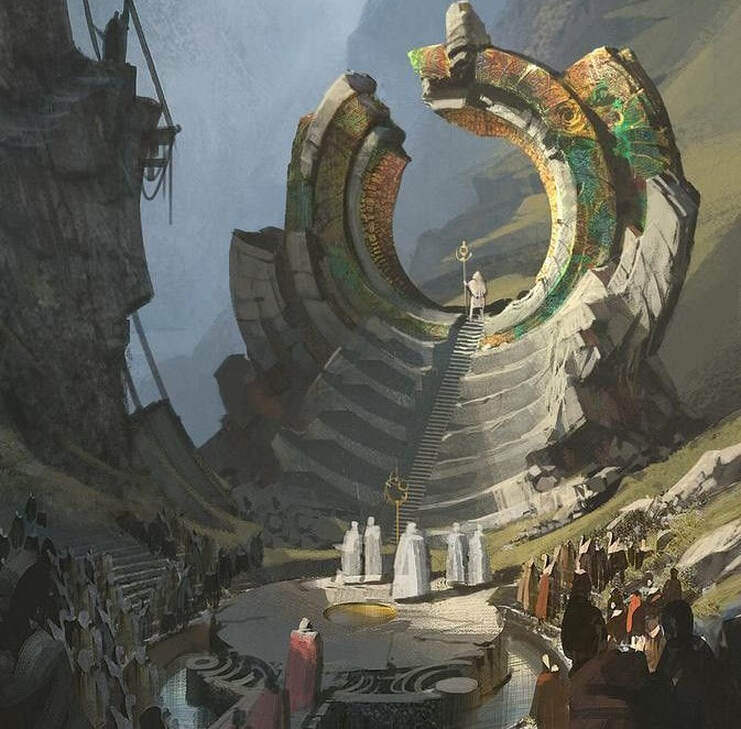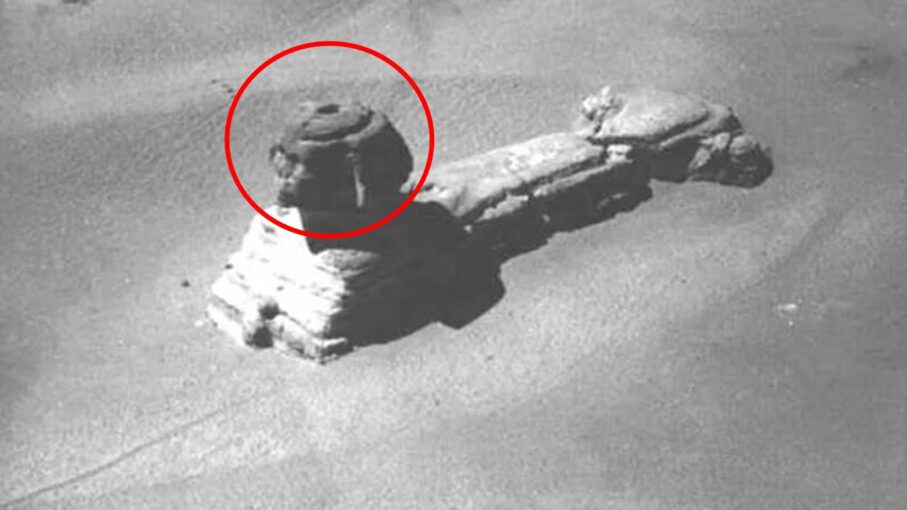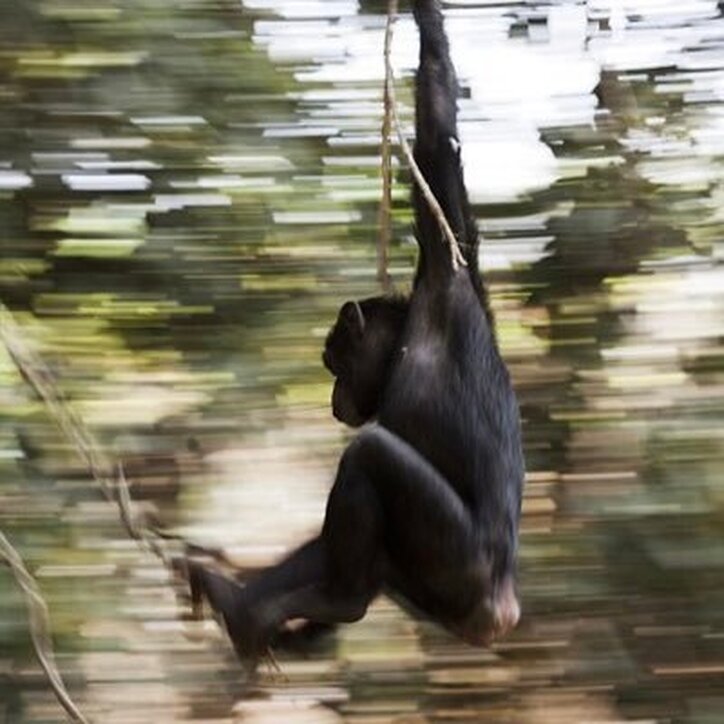|
People have been predicting the end of the world almost as long as the world has existed. Whether they thought the world would end far in the future or the very next day, there are a plethora of doomsday predictions to be found when studying ancient civilizations. One huge question is whether the Sumerians predicted the end of the world or not. Many of those old prophecies have sparked modern intrigue. People connecting the old signs and interpreting possible dates to lead to the present or near future. In today’s day and age, we’ve all lived through the “end of the world” several times. Some of these world-ending predictions are biblical, foretelling the rapture. Then there are other theories, like the widespread worry that the world would end in 2012 when the Mayan calendar ran out. The turn of the millennium, too, seems to spark some anxiety. One premise that’s been hanging around for a while but recently gained some traction back in 2017 is that the world will end due to a collision from the planet Nibiru, otherwise known as Planet X. The origins of the lore surrounding Nibiru can be traced all the way back to the ancient Sumerians, one of the first civilizations in the world. But did the Sumerians actually predict the end of the world, or is the Nibiru prediction just another far-fetched theory? The Word Of Sitchin And Ancient AstronautsMuch of the interest and speculation surrounding Nibiru can be traced back to Zecharia Sitchin. Sitchin (1920-2010) was a scholar who worked on translating ancient Sumerian and Akkadian texts and tablets. Linking his translations to interpretations of the iconography, Sitchin developed a theory concerning how Sumerians thought of the supposed planet Nibiru, the end of the world, and how their gods intertwined with it all. His theories can be found in his bestselling book, The Twelfth Planet. Since then, people all over the world have picked up his theories and run with them, expanding and twisting their possible meanings and consequences. Below, we’ll get into the key aspects of Sitchin’s work and modern thought surrounding Nibiru and the end of the world. Who Were The Sumerians?Sumer was one of the first civilizations that we have any knowledge of having existed — dating back to at least 4,500 BCE. The Sumerians settled in the northern part of Mesopotamia, and Sumer consisted of several large cities. Though not much archeological evidence is left, there are tablets and inscriptions that have lent insight into their language, culture, and way of life. Scholars have been able to uncover a rich tapestry of their mythology and stories through translation and interpretation. Nibiru / Planet XSo far we’ve mentioned Nibiru a whole lot, but what is its actual significance? Supposedly, Nibiru is an additional planet in our solar system that the Sumerians documented and named. Though Sitchin’s research of Nibiru culminates in The Twelfth Planet, we should more so tend to think about Nibiru as a potential ninth (or tenth, if you still count Pluto) planet to our solar system. Sitchin uses the iconography of a sun surrounded by numerous planets in order to support his theory that the Sumerians were not only aware of Nibiru, but placed special significance upon it. But with science as advanced as it is, how can there be an extra planet in our own solar system that we don’t know about? Especially when the ancient Sumerians did? This can be explained by the proposed orbit of the planet Nibiru, also referred to interchangeably as “Planet X.” Nibiru’s supposed orbit around the sun is much larger and much more elongated than the other planets in our system. In fact, Sitchin states that one full rotation around the sun takes approximately 3,600 Earth years. And so we only come in to contact with the planet every several millennia. Sitchin ties several biblical and historical events to the presence of Nibiru, even claiming that the great flood of the Bible occurred because of the gravitational pull that Nibiru caused. Though the crossing of Nibiru and Earth should be a good deal off base on Sitchin’s proposed timelines, followers of the idea claim that the length of the orbit can of course change due to shifting gravitational pulls over the course of the centuries, this would mean that a potential crossing could happen much sooner than we’d otherwise think. More fascinating than the planet itself, however, are its supposed inhabitants. The Anunnaki And The Evolution Of The Human RaceSimply speaking, the term “Anunnaki” refers to the pantheon of gods worshipped by the Sumerians, Akkadians, Babylonians, and Assyrians. These gods were descended from An, the god of the sky. More prevalent gods and goddesses that have found their way into other cultures include Marduk and Inanna, who has been frequently conflated with the later Ishtar. Alright, so the ancient Sumerians worshipped a bunch of gods like most other societies, so what? How does this ancient Sumerian mythology and religion have anything to do with the planet Nibiru? Well, what if you heard that the Anunnaki weren’t gods at all, but instead aliens? Sitchin’s theory of the Anunnaki falls right in line with what you’d expect to see on an episode of Ancient Aliens. If we’re to go by Sitchin’s theory, the Anunnaki were (or potentially still are) an advanced race native to the planet Nibiru. They came to Earth most likely to mine minerals, particularly gold, that their own planet and atmosphere was lacking. Upon coming to Earth, they created and bred humans to serve as their slaves and complete this labor. Sitchin uses this forced hand in evolution to explain away evolutionary gaps and missing links. And so, being more powerful and advanced, the Anunnaki instituted themselves as gods among their human slaves, when in reality they were just strange and advanced aliens. This idea falls in line with the now-popular premise of “ancient astronauts,” or the theory that in the distant past advanced civilizations came to Earth from foreign planets and posed as gods. This set of theories is often used to explain away surprising advanced ancient technology and constructions. Sitchin conflates his theory of the Anunnaki with the biblical Nephilim, or “sons of God,” who were said to have interbred with humankind. Good old Sitchin certainly did like to tie in his theology. It’s also proposed that members of the Anunnaki disapproved this inter-breeding. As such, they did not warn the humans of the negative effects the Earth would face when Nibiru came too close — it’s gravitational pull thus causing the great flood. […] But you shouldn’t worry about Nibiru triggering the apocalypse — the Sumerians didn’t.
0 Comments
Europe, the Old Continent is known for its amazing history, Medieval times, and stunning fortresses and monarchies. Between 700 and 300 BC, a large number of forts were built in Scotland, many of them on top of hills, with walls made of stones piled together without the use of mortar. This at first may not seem like anything out of the ordinary, as of course, there are plenty of such structures across the world, and not just in Europe. However, the entire story changes completely going from ordinary to extraordinary upon close examination which reveals that many of the stones that make up the walls of these ancient fortresses are fused together. Some of the areas of the forts were converted into a kind of glass, featuring the remains of what was without doubt air bubbles and drops of molten rock which are evidence that the stones were once subjected to temperatures that led to a vitrification process. Not a single scholar has been able to explain how this is possible. Therefore, during the last three centuries, archaeologists have tried to answer the questions surrounding the mysterious Scottish fortresses. One of the first British geologists to describe these mysterious structures and the mystery behind them was John Williams, author of Natural History of the Mineral Kingdom. It was he who first described the mystery in 1777 after looking at a few strange ruins, of which later more than a hundred examples have been found throughout Europe, mainly in Scotland. So, who built them? How did they manage to vitrify the stone? And what sort of technology was used? And is it possible that we do not see the entire picture? Too many questions and no answers at all. These structures were given the name of vitrified forts. These structures have amazed geologists for centuries because there is no scientific explanation for how the rocks fused. The temperatures at which they had to be submitted for vitrification occur are comparable to the detonation of an atomic bomb, say some experts. But what is interesting is the fact that there aren’t one or two vitrified structures, but hundreds of examples spread across Europe, with 70 forts existing in Scotland. As the first vitrified structures were discovered in Scotland, it was thought that they were exclusive to Scotland, the most famous being Dun Mac Sniachan, Benderloch, Craig Phadraig, Ord Hill, Dun Deardail, Knock Farril, Dun Creich, Finavon, Barryhill, Laws, Dun Gall, Anwoth, Tap or O’Nort. However, examples of similar structures have been found in Bohemia, Silesia, Thuringia, in the provinces of the Rhine, in Hungary, Turkey, Iran, Portugal, France, and Sweden, among others. What is strange is that the vitrification is not total in all the forts, nor is it homogeneous in the walls of the same sites. Experts have found that in some cases the stones appear partially calcined and fused, while in others they are covered by a layer of vitreous enamel, and sometimes, although rarely, the entire length of the wall presents a solid mass of a vitreous substance. Nobody knows how these walls came to be vitrified. Some scholars believe that it was intentional, to strengthen the defenses of the forts, but in reality, this would have weakened them, so it is unlikely that this was their intention. Experts also say that the vitrification was unlikely to be the result of war damage, as the result of a siege, because in order to reach vitrification, the fires must have remained burning for days at a temperature between 1050 and 1235 degrees Celsius, something that is extremely improbable, although not impossible. Some theories point to the possibility that the vitrification of the first may have been the product of deliberate destruction either by attackers after the capture of the forts or by their occupants as a ritual act. Also read: Desert Glass is Evidence of Atomic Explosions in Ancient Past The dating of the forts across Europe covers a wide range of dates. The oldest forts are believed to have been built during the Iron Age, but there are also those many forts with similar characteristics dating from the Roman era, while the last corresponds to the Middle Ages. Recent studies suggest that they were created by massive plasma events such as solar flares. These occur when the ionized gas in the atmosphere takes the form of gigantic electric bursts, which can melt and vitrify rocks. In the 1930s archaeologists, Vere Gordon Childe and Wallace Thorneycroft conducted an experiment with a gigantic fire directed towards a stone wall, an experiment that was repeated in 1980 by the archaeologist Ian Ralston. In both cases, the experiments produced the partial vitrification of some of the stones, but they failed to explain how it could have been produced on such a large scale as in the vitrified forts. In the absence of a definitive theory or conclusive evidence, the vitrified forts of Europe continue to be one of the strangest geological and archaeological anomalies in the world, eluding explanation for centuries. Located in Abydos, modern-day Egypt we find a number of incredible structures. Among them is the so-called Osirion or Osireon an ancient Egyptian temple located to the rear of the temple of Seti I. It is located in the extension of the longitudinal axis of the temple of Seti I and was made with limestone, reddish sandstone, and granite. The temple was discovered in 1902 by Flinders Petrie and Margaret Murray who were excavating the Temple of Seti I. The entire site was uncovered in 1926. Mainstream archaeologists place the temple to the reign of Set I. Its structure consists of a vaulted corridor, which, starting from the temple of Seti I, reaches the antechamber, a short passage that connects with the great central chamber, and the last chamber, parallel to the antechamber. The building typology, its elements and the materials used (granite) are similar to the temple of the valley of the pyramid of Khafre, in Giza, so some scholars have suggested that it may be a copy or a previous building that was reused. The Osirion is also known as the tomb of Osiris, while the temple of Seti is known as the temple of Osiris. Abydos was the main site of the worship of Osiris. The Osirion is fascinating for a number of reasons. It’s extremely difficult to access the interior, due to flooding caused by the rise of the phreatic level of the underground water layer. The Osirion, unlike any other temples at Abydos, was constructed at a lower depth than structures nearby. It also features a completely different architectural approach. The fact that is frequently flooded means that it would have made its construction impossible had the water have been the same at the time it was erected. This raises a number of problems. Furthermore, according to Strabo — a Greek geographer, philosopher, and historian — who traveled to the Osirion in the first century BC said that it was built by Ismandes, or Mandes (Amenemhet III), the same builder as the Labyrinth at Hawara. “Above this city [Ptolemaïs] lies Abydus, where is the Memnonium, a royal building, which is a remarkable structure built of solid stone, and of the same workmanship as that which I ascribed to the Labyrinth, though not multiplex; and also, a fountain which lies at a great depth, so that one descends to it down vaulted galleries made of monoliths of surprising size and workmanship.” Many believe that this temple was not the work of the Egyptians., but rather an ancient site they found and built their temples around it and continued worshiping it for millennia. There are theories that suggest that when the temple was built, it was not located beneath the soil and that during thousands of years that would follow, sediments started piling up eventually covering the temple entirely. This theory would suggest the Osirion as not built by the ancient Egyptians as mainstream scholars put forth, but by a civilization that predates them. More curious details are revealed if we decide to compare the architecture of that period, and the Temple of Seti I, you see the difference clearly. It’s as if the Osirion is a temple out of place and time. This is why perhaps the biggest reason that goes against the conventional dating of this structure is the architectural context. The new architecture of the ancient Egyptians is incredibly different in its style and form, and although each temple of the new kingdom is unique, there is a multiplicity of stylistic coherence between their designs. Curiously, the Osirion does not exhibit any of these traits. Furthermore, there is an absence of inscriptions on the site, and it seems that the construction with megaliths is unique to the architecture of the new kingdom, not to mention that tt seems almost absurd that Seti built his temple on one level, and the Osirion a few meters deeper into the ground. The Flower Of Life At The Osirion Another fascinating feature we found at the Osirion is the Flower of Life. The shape was not painted but was engraved in the rock. This means that even though so scratch of a piece the curious symbols remains. It is carved a few centimeters into the rock. There are those who dare to say that the symbol seems as if it was engraved with some sort of laser. Of course, there isn’t actually evidence to support this claim, other than the fact that ‘it looks like that’.
Human civilization as we currently know it will not survive much longer. In addition to the critical structural faults that humankind has built into its complex systems (such as food, electricity, finance, politics, etc.), anti-human globalists are rapidly deploying plans to deliberate take down the human race and prepare Earth for a post-human future.
What few modern people seem to recognize is that this isn’t the first time a human civilization has fallen on planet Earth. At least one former global civilization also collapsed, and nearly all the evidence of its existence has long been buried or destroyed.
Take a look around you today and ask this question: Do you see anything that would survive 1,000 years if human civilization collapsed? No buildings would remain after 1,000 years, and nearly all the “stuff” that defines our society today would disappear, especially if it were buried under water and mud following an asteroid impact or another Great Flood.
The entire digital realm of human knowledge would vanish, as there are no man-made storage systems in existence today that can store information for 1,000 years. Hard drives lose their integrity in about a decade, and even optical storage media degrades over a century or two.
Perhaps the only evidence that might remain from our current civilization would be concrete bridges and a layer of microplastics deposited around the world, leading future archeologists to declare this collapsed civilization to have existed during the “Toxic Epoch.” The great pyramids in Egypt would survive, of course. As they have already demonstrated through at least one collapse that took place more than 10,000 years ago.
Human civilization is far more fragile than most people recognize, and with anti-human globalists like Bill Gates now deliberately trying to collapse photosynthesis and the entire global food supply, it won’t be long before the mass die-off accelerates.
Humanity will be lucky to emerge from this engineered global genocide with even one billion survivors… and that’s still far higher than what the globalists are seeking to achieve with their biological weapons, terraforming operations to alter the atmosphere, and media disinformation campaigns to carry out psychological terrorism against humanity. This is the primary subject of today’s Situation Update, which brings in startling information about the true history of humanity and why human civilization as we know it today is on the verge of a cataclysmic collapse that will end the (human) world as we know it. Listen here: Design elements present at Göbekli Tepe are also found in Easter Island on the massive Moai Statues, in Tiahuanaco, and other ancient sites around the globe. How’s this possible? Despite the fact that we’ve studied our ancestors, their cultures, their origin, and their way of life, we have failed to answer many questions related to our past. The countless monuments scattered across the globe are an ancient message left behind by our ancestors, a message which despite extensive studies, we have yet failed to decipher. One of the most mysterious ancient temples on Earth is located in modern-day Turkey, more precisely, the city of Urfa. There, we find an ancient temple complex which is believed to have been erected around 9,600 BC. Göbekli Tepe is considered among many experts as the oldest temple on Earth, and despite its importance, we know very little about it. Not only is this ancient temple complex important because of its age, but it’s also of great importance because by who it was built, and perhaps, even more interestingly, by the symbology it offers. If you take a close look at Göbekli Tepe, you will notice a curious stance and symbolism that we can find in many other places across the globe. On Easter Island, for example, we see a great similarity between the Moai and the curious Pillars at Göbekli Tepe. On both archaeological sites, it seems the ancient builders used the same symbology. But Is This A Mere Coincidence? The Archaeological site of Göbekli Tepe is composed of several temples whose main construction motif are massive stone pillars that range in weight between 30 and 60 tons. Somehow, thousands of years ago, ‘primitive’ cultures managed to quarry, transport and build something history tells us should not exist. These enigmatic T-shaped pillars are intricately decorated with depictions of a number of animals such as foxes, lions, snakes, etc. However, in addition to the various animal depictions at Göbekli Tepe, we see humanoid characteristics depicted on some of the pillars. Göbekli Tepe’s T-shaped stela display arms and hands belonging to what many experts believe are depictions of humanoid beings. The ancient builders of Göbekli Tepe carved on the t-shaped tocks long hands and arms of what could also be representations of their gods. However, this extremely interesting symbolism is not unique to Göbekli Tepe and is found in various archeological sites across the globe. If we travel halfway around the globe to Easter Island, in the middle of the Pacific Ocean, we see the massive Moai statues and their curious symbolism which is eerily similar to the stone pillars of Göbekli Tepe. The massive Moai were intricately carved in a sacred standing position, with hands position on omphalos. Many authors agree that this posture is meant to portray birth or rebirth. But how is it possible that such symbolism is present both in Göbekli Tepe and on Easter Island? Is this just a coincidence? Not likely, as other ancient sites around the globe feature the same thing. If we take a trip back to Turkey, we will find that the Neolithic settlement of Nevali Cori and Kilisik feature similar design elements. But that’s not it. Statues from Tiahuanaco in Bolivia, and archaeological sites in Mexico, as well as Mesopotamia, feature the very same symbolism: massive stone statues and hands coming together. The question is… what connects all of these archaeological sites, and, is it possible that somehow, these ancient cultures shared a common designer? What Is The Mysterious ‘Handbag’ Of The Gods, Depicted In Sumer, America, And Göbekli Tepe?4/24/2021 How is it possible that thousand-year-old depictions of the Anunnaki show the gods carrying a mysterious bag, and halfway around the world we find the same thing depicted by ancient Mesoamerican civilizations? Depicted by the ancient Sumerian representations of the Anunnaki, the mysterious ‘handbag’ of the Gods is seen in several cultures in America and Göbekli Tepe. Coincidence? Compelling evidence — found in the last couple of decades — has proven mankind is a species with amnesia. The countless discoveries made all across the globe has forced us to question everything about the origin of mankind, ancient cultures and history in general. Slowly and piece by piece, we have been exploring and gathering small pieces of a MASSIVE puzzle that have driven us in the right direction when searching for answers mainstream scholars have not been able to fully answer. How can you explain the countless similarities among civilizations that inhabited Earth thousands of years ago, which were separated by tens of thousands of kilometers? Why did nearly all ancient cultures on Earth decide to build Pyramids? And why are so many pyramids eerily similar? The 10th Sumerian Tablet: The Anunnaki Built The Pyramids It’s as if nearly all ancient civilizations followed the same blueprint. It’s as if somehow, ancient cultures were interconnected thousands of years ago. One of the most interesting and mind-boggling enigmas can be traced back to Ancient Mesopotamia — comonly referred to as the Cradle of Civilization — where a mysterious motif has driven many authors to question history as we have been taught. The ancient Sumerians depicted the Ancient Anunnaki with curious items. Two of the most interesting objects seen in the ancient Sumerian deities were the ‘hand watch’ seen on nearly all depictions, and the mysterious ‘bag’ carried by the Gods. Curiously, if we travel thousands of kilometers around the globe from Mesopotamia to the Americas, we will find that the ancient Maya, Aztecs and other ancient civilizations utilized the same motif when depicting their deities. Furthermore, if ew travel to Egypt we will see that the Ankh symbol was also carried around by the gods just as the mystery handbag in ancient Mesopotamia and the Americas. Why is it that ancient civilizations in America, Egypt, and ancient Mesopotamia depicted their deities carrying a mysterious object in their hand? Is it possible that all ancient cultures in America, Egypt and Mesopotamia were visited by the same ‘Gods’? Interestingly, the Ancient Anunnaki were nearly always represented in a humanoid form, even though numerous traits indicate clear differences between the Anunnaki and ordinary humans, the facial features of the Ancient Anunnaki Gods were always well-hidden thanks to the large beards. Just as the ancient Sumerians depicted their deities in a humanoid form, the Ancient Egyptians and different cultures in the Americas did the same thing. The obvious question here is why? Why did ancient cultures — separated thousands of kilometers from each other — depict their deities in a nearly identical way? Furthermore, how is it even possible that the Ancient Sumerians depicted their gods carrying a mysterious bag, and that people halfway across the world did the same thing? At the archeological site of La Venta, we will find a stone stele depicting the ancient Mesoamerican God Quetzalcoatl, who is curiously holding in his hand the same ‘Bag’ we see in ancient Sumerian depictions. But this isn’t the only site in Mexico where the curious representation was found. If we travel to Tula — an important regional center which reached its height as the capital of the Toltec Empire between the fall of Teotihuacan and the rise of Tenochtitlan — we will find their massive ‘Atlantean’ statues, and if we observe closely, we will notice that once again the mysterious handbag is present. If we travel to Göbekli Tepe, located on a remote hilltop in southern Turkey we will find the same THING. Göbekli Tepe is one of the oldest (if not oldest) ancient megalithic temples on our planet. There, intricate massive stone pillars arranged into a set of rings stand tall and proud telling a millennia-old story when different civilizations ruled the over the planet. The massive stones were believed to have been carved by Neolithic hunter-gatherers some 12,000 years ago, even though recent evidence points towards the fact that. The mysterious temple, which consists of three huge stone circles was deliberately buried for an unknown reason in the distant past. After 13 years of digging, archaeologists investigating the ancient site have failed to recover a single stone-cutting tool. No one has been able to understand how ancient mankind, which was believed to be incapable of such feasts, erected some of the greatest stone-works on the planet. Does the presence of the mysterious bag, carried by the gods, indicate that these two cultures connected in a mysterious way? Why did ancient cultures depict their Gods carrying the mysterious handbag? What was inside it? And most importantly, how is it even possible that the mysterious handbag is present in different civilizations around the globe — which according to mainstream scholars were never connected? What if the Ancient Anunnaki—depicted by the Ancient Sumerians — and the Gods who visited the ancient Maya, Aztec, Toltec and Olmec civilizations are in fact the SAME? What do you think this mysterious bag is meant to represent? Do you think it is just a coincidence that these three sites — and there are more — feature all the same thing? What could have been carried by the ‘Gods’ that was so important that nearly all ancient cultures had to illustrate it? In 1987 a Japanese team from Waseda University (Tokyo), under the direction of Sakuji Yoshimura carried out an electromagnetic sounding survey of the Khufu Pyramid and Sphinx and found SEVERAL cavities and tunnels. Rare images of the Great Sphinx suggests there are several intricate entrances. The Great Sphinx of Giza has captured the imagination and interest of anyone who has seen it. This fascinating monument — which proudly guards the Pyramids at Giza — is without a doubt one of the most mysterious ancient structures on the planet. With a length of 241 feet and a height of 66 feet, the Great Sphinx of Giza holds the record as the largest monolith statue on the surface of the planet. But its beauty and mystery go far beyond its size. If we take a look at the Sphinx today and compare it to extremely old and rare images of the monument when it was still covered in sand, we will notice numerous interesting details which point to the possibility of an underground world existing beneath it. This ancient monument — which some authors argue is far older than the ancient Egyptian civilization — was discovered (almost completely covered in sand) in AD 1817, when the first modern archaeological dig, led by Giovanni Battista Caviglia managed to uncover the Sphinx’s chest completely. After a couple of decades, the entire Sphinx was finally excavated in 1925 to 1936 by an archaeological expedition led by Émile Baraize. It is precisely during that period when the most interesting images of the Great Sphinx were taken. These images depict numerous cavities, entrances and what appear to be tunnels that according to many leads below this majestic ancient monument. Interestingly, in 1987 a Japanese team from Waseda University (Tokyo), under the direction of Sakuji Yoshimura carried out an electromagnetic sounding survey of the Khufu Pyramid and Sphinx. The results were fascinating: A. South of the Sphinx. The Japanese indicated the existence of a hollow 2.5 m. to 3 m. underground. And, they found indications of a groove on the Sphinx body that extends beneath the Sphinx. B. North of the Sphinx. The Japanese found another groove similar to the southern one which may indicate that maybe there is a tunnel underneath the Sphinx connecting the south and north grooves. C. In front of the two paws of the Sphinx. The Japanese found another hollow space about 1 m. to 2 m. below surface. Again, they believe that it might extend underneath the Sphinx. The conclusion of the Japanese work suggests that the sanctuary of the Sphinx contains more cavities below the Sphinx than were previously known. (Source) (Source) (Reference) The results of the survey performed by Scientists from the Waseda University were confirmed in 1991, when a team consisting of Thomas Dobecki, and John Anthony West carried out a survey of the Sphinx using seismic refraction, refraction tomography, and seismic reflection. The investigators interpreted their data to indicate shallower subsurface weathering patterns toward the back and deeper weathering toward the front, which they take to indicate that the back of the Sphinx and its ditch were carved by Khafre later than the front. They interpret their data to likewise indicate subsurface cavities in front of the front left paw, and from the left paw back along the south flank. (Source) The WASEDA Report HighlightsThe following excerpts are from Studies in Egyptian Culture No. 6: Non-Destructive Pyramid Investigation (1) By Electromagnetic Wave Method by Sakuji Yoshimura, Takeshi Nakagawa, Shioji Tonouchi, and Kazuaki Seki (Tokyo: Waseda University, 1987; grammatical errors remain uncorrected): 1. Area South Of The SphinxSeven measuring lines were installed east and west and four measuring lines north and south to scan the Sphinx over 70 meters from the east to the west and over 10 meters from the north to the south. The bedrock of the Sphinx contains more moistures than that of the pyramid. This would be because the Sphinx locates closer to an underground stream. A response was obtained which would indicate that there is a plash 2.5 to 3 meters below the ground surface near the south-eastern forefoot. On its body, a groove with a width of 2 meters, a depth of 3 meters, and a length of 2 meters was found which seems to extend underneath the body. At the center of the southern rock, vertical cracks were observed; however, the cracks never seem to affect the bedrock. 2. Area North Of The SphinxFour measuring lines were installed east and west and five measuring lines north and south to scan the Sphinx over 60 meters from the east to the west and over 7 meters from the north to the south. The northern bedrock seems to contain more moistures than the southern bedrock. The vertical cracks, run east and west across the Sphinx, would be produced naturally. On the body, there is a groove similar to that on the southern part, which seems to extend underneath the body. Under the Sphinx, therefore, there may be a tunnel. Further, near the front elbow, a geometrical cavity (1m x 1.5m x 7m) has been detected, possibly containing metal or granite. 3. Area East Of The Sphinx (Near Forefeet Of The Sphinx)The front of the Sphinx consists of pieces of limestone that have been arranged artificially and paved. With the passing of time, the arranged and paved pieces of limestone have been projected and recessed. At first, the team had been concerned about survey, as the turbulent reflection on the surface might disturb the sensor. Measuring lines (comprising reticulate 10 lines each) were set by meter east and west, and north and south. Inner part of both the forefeet, a geometrical cavity (1.5m x 3m) has been detected. The bottom has not been detected clearly, because the bottom may be uneven or there may be some articles. The cavity seems top extend from the east to the west, i.e., toward the chest; however, an offering table made of granite prevented survey. At the western part beyond the offering table, two measuring lines were installed for survey east and west. The surface, which is not made of limestone and has a great number of cracks, was not measured correctly due to violent turbulent reflection on it. Rough survey has indicated the high possibility of the presence of a cavity 1 to 2 meters below the ground surface. The cavity may be connected to the above cavity located in front of the Sphinx, and may extend into the Sphinx. However, if these cavities are separated, it is very possible the former cavity located in front of the Sphinx is Sertab where the statue was installed. [pp. 7-8] The Sertab mentioned above is more commonly called a serdab, a room in Old Kingdom tombs in which statues representing the ka of the deceased were placed. Eyeholes or slits were often provided so that the ka might gain access to its offerings. There is little reason, however, to think that the Sphinx served as a tomb. (Source) Several photos, as well as scientific survey data indicate there is a strong possibility that there are shafts and passageways leading towards unexplored chambers underneath the Sphinx. Rare images of the Sphinx show numerous anomalies that were ‘covered up’ by later restorations. There are images of the Sphinx which show a huge fissure on top of the hips of the Sphinx, which many claims led to the burial chamber. According to secrethistoy.wikia.com, there is also documented evidence of a large rectangular entrance on top of the hips at the back of the Sphinx. This entrance measured 4 feet x 2 feet in size and is mentioned in many travelers reports of visits to the Sphinx. This shaft and burial chamber that it leads to is thought to have been formed during Pharaonic times, to form a retrospective burial chamber, which a few people gained access to. Big Tech Pouring BILLIONS Into Harvesting Blood Of The Young So Elites Can Live And Rule Forever4/15/2021 Big Tech oligarchs in the U.S. and abroad are pouring billions into research that will enable them to live and govern eternally by literally discovering the once-fictional “fountain of youth,” even if they have to harvest the blood of the young to achieve it. In fact, the elite aren’t even hiding what they’re trying to do: No less than Newsweek recently published an expose regarding this ghoulish research. “The Spanish firm Grifols helped set off a kerfuffle last year when it, along with other firms, offered nearly double the going price for blood donations for a COVID-19 treatment trial,” the magazine reported. “Brigham Young University in Idaho had to threaten some enterprising students with suspension to keep them from intentionally trying to contract COVID-19. “The trial failed, however, and now the Barcelona-based firm is hoping to extract something far more valuable from the plasma of young volunteers: a set of microscopic molecules that could reverse the process of aging itself.” Grifols closed a $146 million deal earlier this year to purchase Alkahest, a firm launched by Tony Wyss-Coray, a Stanford University neuroscientist, who, with Saul Villeda, disclosed in research papers published in 2011 and 2014 that blood from young mice could help restore functionality of the brains of aged mice. The discovery then led to a new field of study called geroscience which “seeks to understand molecular and cellular mechanisms that make aging a major risk factor and driver of common chronic conditions and diseases of older adulthood,” the National Institutes of Health said. Over the past six years, Alkahest has found more than 8,000 proteins in blood that show some potential in terms of slowing or reversing signs of aging. “Its efforts and those of Grifols have resulted in at least six phase 2 trials completed or underway to treat a wide range of age-related diseases, including Alzheimer’s and Parkinson’s,” Newsweek reported. You can already see where this is headed: The objective, of course, is to use the blood of the young to help unlock the secrets of aging so that the process can be arrested and even reversed. What’s more, Newsweek is blatant and open about the objective of these companies and their research. “Their goal is to hack the process of aging itself and, in the process, delay or stave off the onset of many of the diseases most associated with growing old,” the magazine reports. But here’s the thing: How expensive will this process be? Will only the super-wealthy, the top couple of percent of earners, be able to afford it? Will it remain classified if the researchers unlock the secret because of the tens of billions of dollars generated each year by the healthcare and cosmetic industries to ‘keep looking young’ and treat age-related illnesses? And finally: Will this treatment only be available to those who are in power? The answers to those questions and others are vital because, apparently, researchers are on the cusp of discoveries. Previously, “people working on diseases did not think that aging was modifiable,” Felipe Sierra, a now-retired director of the Division of Aging Biology at the National Institute on Aging, told Newsweek. “That is actually what many medical books say: The main risk factor for cardiovascular disease is aging, but we cannot change aging so let’s talk about cholesterol and obesity. “For Alzheimer’s, aging is the main risk factor — but let’s talk about the buildup in the brain of beta-amyloid proteins. Now that is beginning to change.” Before the COVID-19 pandemic, investors were putting up billions to fund these biotech firms. And now, the payoff is close. “You have no idea how many people are interested to investing money in longevity,” Nir Barzilai, founding director of the Institute for Aging Research at Albert Einstein College of Medicine of Yeshiva University, as well as the founder of one of the biotech firms, told Newsweek. “There are billions of dollars.” It has been detected previously that animals shed DNA, known as eDNA from their bodies into the environment. It was also previously detected in water, snow and soil, but not in the air. Now, scientists have found that human and animal DNA can be collected from air too. Scientists say this study can prove beneficial in studying contagious diseases like COVID-19, elusive animals, criminal investigations, forensic science and archaeology. If a criminal is suspected to have been present on the crime scene, his DNA in the air can revealed his identity. Environmental DNA shed by any person’s body (eDNA) will be captured easily by sucking air from a room and pumped through an ultra-fine filter. A senior lecturer at Queen Mary University of London, Dr Elizabeth Clare, set about determining if environmental DNA can be filtered from air. As per the study, naked mole-rat DNA was found from the air of the room where they were housed in. Human DNA from the mole rats carers were identified using technology that scientists say was a surprise, reported DailyMail. Dr Clare said: ‘Here we provide the first published evidence to show that animal eDNA can be collected from air, opening up further opportunities for investigating animal communities in hard to reach environments such as caves and burrows.’ She adds it ‘opens up some interesting questions’ about how the technology could be used in forensics or archaeology. For example, it will be easy to identify a criminal suspected to be present on the crime scene after analyzing the air and reveal his DNA. But the main use, Dr Clare believes, is in the study of hard-to-reach and shy species. The emerging technology relies on sucking the air in a room into a filter, and this, Dr Clare says, means it may be harder to obtain DNA from larger room, limiting the scope of the technique as the DNA will be so heavily diluted. According to pharma giant Moderna, the COVID-19 mRNA based experimental vaccines being approved for emergency use for the first time in history are Operating System designed to program human DNA. Even, Mark Zuckerberg admitted that COVID-19 vaccines will change your DNA and that he is not sure what would be the long-term effects of these vaccines. Interestingly, as per their own policy, Facebook will censor you for saying the exact same thing, even with proof and brand it as fake news. Recently, as reported by GreatGameIndia, Pentagon scientists created a microchip which they want to inject in your body to detect coronavirus in your body even before you show any symptoms. They have also created a filter to extract the virus from your blood. Source: GreatGameIndia.com
Some residents said they saw monkeys swinging in the trees in St. Joseph’s Cemetery at West Eight Street & Enright Avenue in East Price Hill. One of them, Sammy Trinh, posted a video to Facebook that she says shows the monkeys. You can watch it in the video player below and judge for yourself.
Monkeys loose on Cincinnati's west side Officers responded to the area at about 10 p.m. Wednesday after multiple 911 calls. When police tried calling the numbers back, they say no one answers. They say that while they did not see any monkeys, they are taking the residents’ reported sightings seriously and described the story as “real.” If the story turns out to be false, police say charges could be filed. If it turns out monkeys are on the loose, police told us they think the animals must have escaped from a private collection.
|
Helena MatiasEditor Archives
July 2024
Please take a look below at the amazing work of Author and researcher Stephen Quayle
Categories
All
|


